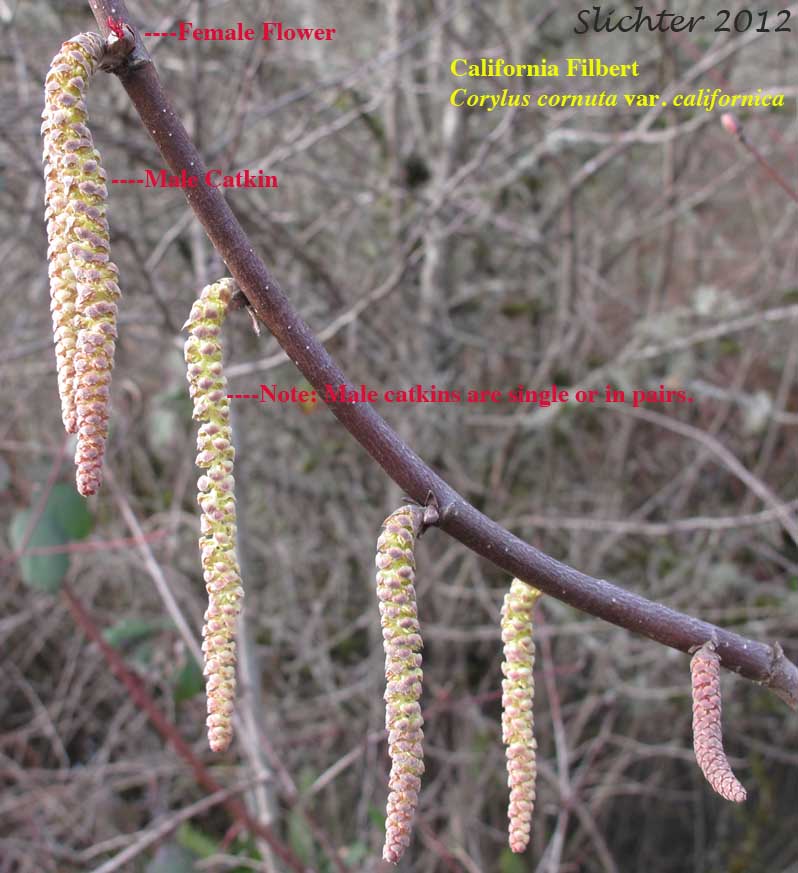
Common Filbert, European Hazel, European Hazelnut, Filbert, Hazelnut: Corylus avellana - Introduced species. Probably fairly common in the riparian forest understory near larger communities where squirrels and jays may plant filberts taken from backyard feeders. Winter buds green in fall, most glabrous with puberulent margins, oval to oblong in shape with acute tips. Stem, leaf and petiole hairs: glandular and bristly with glandular hairs mixed with finer puberulence. Catkin peduncles: range in length from sessile to 1 cm. Male catkins normally number more than 1 or 2 per cluster. Male catkins open and release pollen from late December through February. Female flower receptivity to pollination is from January through February. The nut involucre is deeply lobed, wide-mouthed and no longer than the nut and covered with soft downy hairs.
Beaked Hazelnut, California Hazelnut: Corylus cornuta ssp. californica (Synonyms: Corylus californica, Corylus cornuta var. californica, Corylus cornuta var. glandulosa, Corylus rostrata var. californica, Corylus rostrata var. tracyi) - Native species. Winter buds silvery in fall with appressed puberulent to villous or hirsute hairs, ovalin shape with tips obtuse to acute. Stem, leaf and petiole hairs are whitish, hispid (can prick human skin) and appressed to forward pointing. Some glandular hairs often mixed with the hispid hairs, especially on the leaf petioles. Catkin petioles: very short or almost sessile. Male catkins usually number only 1 or 2 per cluster. Male catkins open and relase pollen beginning in late February to early March with female flower receptivity to pollen in March. The nut involucre is flask-shaped with a long tubular beak extending well beyond the nut and covered with bristly hairs.
Beaked Hazelnut: Corylus cornuta ssp. cornuta (Synonyms: Corylus cornuta var. cornuta, Corylus cornuta var. megaphylla, Corylus rostrata) -
Hybrid Filbert: Corylus avellana x Corylus maxima -
Plant Characteristics From: Wilbur L. Bluhm [wlbluhm@juno.com], Originally published in the Bulletin of the Native Plant Society of Oregon, Vol. 34 (2001) No. 3, page 36.
http://www.npsoregon.org/arch/bull/01/NPSO_0103.PDF